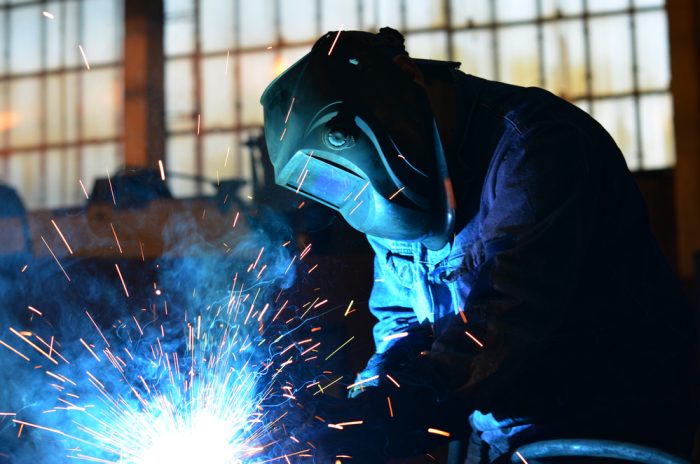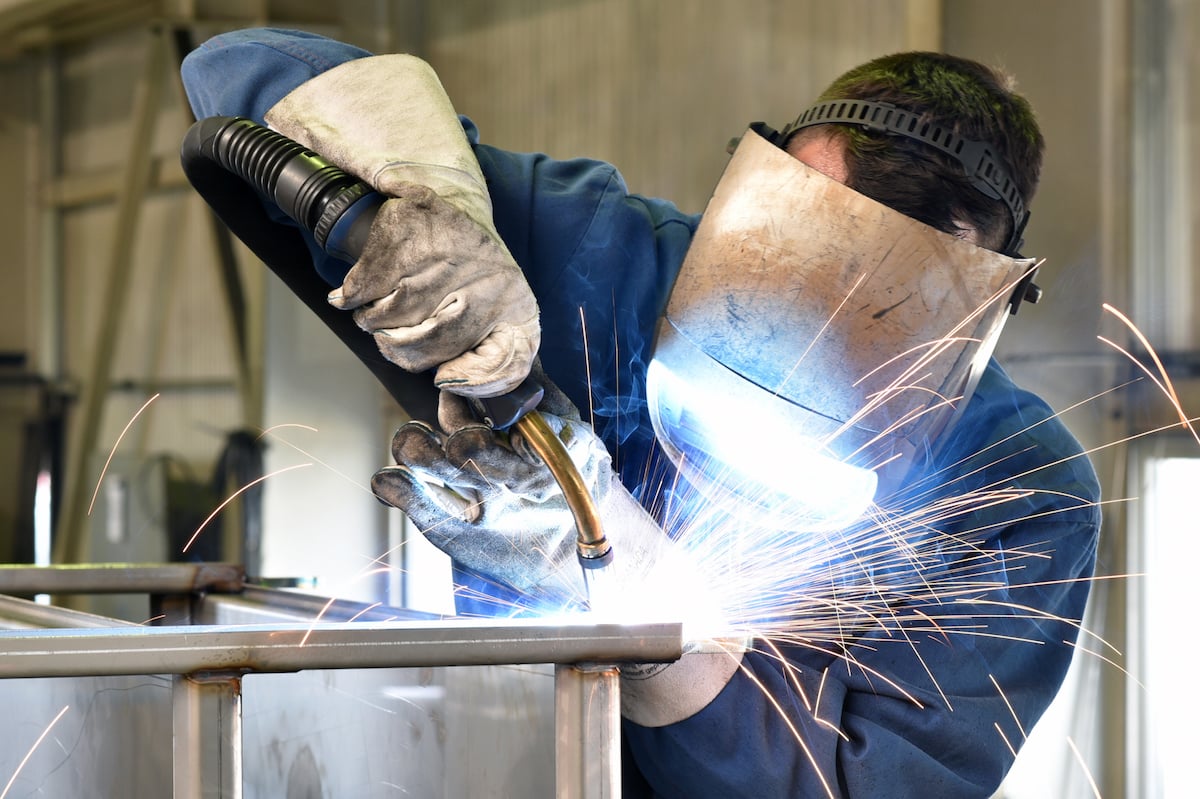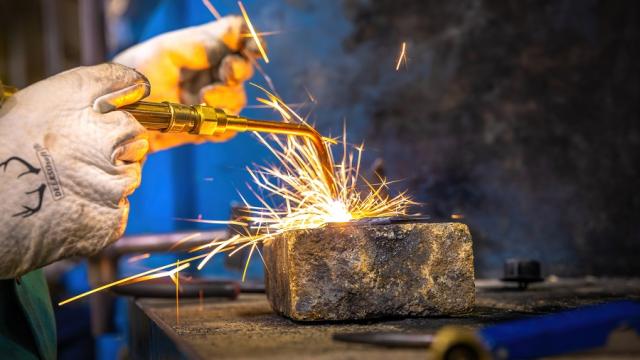Causes of weld porosity and how Belgrade Welding addresses them
Wiki Article
Common Welding Fixing Issues and How to Address Them Effectively
Welding repair work usually run into a variety of concerns that can endanger the honesty of the last product. Common problems include insufficient penetration, porosity, and imbalance, to name a few. Each problem provides special obstacles that call for particular approaches for resolution. Understanding these issues is vital for welders intending to boost their results and abilities. This discussion will certainly explore these usual welding repair service problems and effective techniques to resolve them.Inadequate Infiltration
Poor penetration takes place when the weld metal stops working to completely fuse with the base material, leading to weak joints and prospective architectural failures. This issue typically originates from insufficient warmth input, inaccurate electrode angle, or improper welding speed. Welders might encounter insufficient infiltration due to a mistake of the needed parameters for a particular product thickness or type. In addition, contamination on the base material's surface can prevent efficient bonding, intensifying the problem. To address insufficient penetration, welders should guarantee appropriate settings on their equipment and maintain a tidy work surface. Normal examination of welds is advised to identify any kind of deficiencies early, allowing for prompt improvements and the prevention of compromised structural stability in bonded settings up.Porosity
Porosity is a common problem in bonded joints that shows up as little gas bubbles trapped within the weld steel. This issue can jeopardize the integrity of the weld, resulting in reduced stamina and possible failing under stress and anxiety. Montana Mobile Welding and Repair Fabrication. Porosity commonly develops from contamination, moisture, or improper welding techniques, which enable gases to escape into the liquified weld swimming pool. To attend to porosity, welders should guarantee proper surface area preparation, preserve a clean functioning atmosphere, and make use of ideal welding specifications. In addition, choosing the right filler product and shielding gas can alleviate gas entrapment. Normal examination and testing of welds can help recognize porosity early, ensuring timely rehabilitative actions are taken, thereby protecting the top quality and reliability of the bonded frameworkMisalignment
Imbalance in welding can arise from various elements, consisting of inappropriate arrangement and thermal expansion. Comprehending the origin causes is essential for reliable resolution. A number of adjustment methods are readily available to straighten parts and guarantee structural honesty.Reasons of Imbalance
Welding imbalance usually originates from a selection of underlying problems that can endanger architectural integrity. One primary reason is inappropriate fit-up of elements before welding, which can lead to voids and uneven surfaces. Variations in thermal expansion throughout the welding procedure can additionally lead to distortion, particularly if the materials being joined have various coefficients of growth. Furthermore, insufficient fixturing and securing may fall short to hold components firmly in area, causing activity during welding. Badly kept devices, including welding equipments and tools, may present incongruities in the weld grain, more adding to imbalance. Driver error, stemming from insufficient training or experience, can additionally play a substantial function in producing misaligned welds.
Correction Techniques Readily Available
Attending to misalignment successfully needs a combination of rehabilitative techniques tailored to the particular issues at hand. One usual approach is using components or jigs to hold parts in the correct setting throughout welding, guaranteeing constant placement. Additionally, preheating the materials can help in reducing distortion and boost fit-up. For significant misalignment, mechanical adjustment methods, such as making use of hydraulic jacks or clamps, can be used to fix the setting prior to welding. Post-weld heat treatment might likewise be essential to ease stress and anxieties brought on by imbalance. Ultimately, cautious examination and modification throughout the arrangement stage can prevent misalignment concerns from ending up being considerable problems, promoting a smoother welding procedure and enhancing general structural integrity.Distortion
Distortion is a typical challenge in welding that can develop from numerous elements, consisting of uneven cooling and heating. Recognizing the sources of distortion is vital for executing effective avoidance methods. Addressing this problem not only improves structural honesty but also improves the general high quality of the weld.Sources of Distortion
When subjected to the intense warmth of welding, materials usually undertake adjustments that can result in distortion. This sensation mostly develops from thermal development and tightening throughout the welding procedure. As the weld location warms up, the material expands; upon air conditioning, it gets, which can produce inner stress and anxieties. Additionally, unequal home heating throughout a workpiece can exacerbate these stresses, causing warping or bending. The kind of product likewise plays a substantial function; steels with varying thermal conductivity and coefficients of expansion might react differently, resulting in unforeseeable distortions. Moreover, inadequate joint layout and insufficient fixturing can add to misalignment throughout welding, boosting the possibility of distortion. Recognizing these reasons is crucial for effective welding repair work and avoidance approaches.Avoidance Techniques
Efficient prevention techniques for distortion during welding concentrate on controlling heat input and guaranteeing proper joint style. Maintaining a regular warm input assists to decrease thermal development and tightening, which can cause distortion. Utilizing methods such as pre-heating the workpiece can additionally lower the temperature level slope, promoting uniform heating. Additionally, choosing proper joint styles, such as T-joints or lap joints, can boost security and minimize anxiety focus. Implementing proper fixturing to secure the work surfaces in position better help in maintaining positioning during the welding process. Ultimately, staggered welding sequences can distribute warmth much more uniformly, avoiding localized distortion. By applying these techniques, welders can greatly decrease the possibility of distortion and enhance the general high quality of their welds.Breaking
Cracking is an usual issue come across in welding fixings, usually resulting from numerous aspects such as incorrect cooling rates, product choice, or insufficient joint preparation. The event of fractures can substantially endanger the honesty of the weld, leading to prospective failures throughout operation. To address this problem, welders have to initially evaluate the origin, ensuring that materials are compatible and appropriately chosen for the details application. In addition, regulating the cooling price throughout the welding process is crucial; rapid air conditioning can generate stress and anxiety and lead to cracking. Proper joint style and preparation additionally contribute to reducing the danger. Applying these strategies can boost weld top quality and resilience, ultimately reducing the possibility of breaking in completed weldments.
Incomplete Combination
A significant concern in welding repair work is incomplete blend, which occurs when the weld steel does not sufficiently bond with the base product or previous weld passes - Montana Mobile Welding and Repair Belgrade. This defect can result in weak points in the joint, possibly endangering the honesty of the bonded framework. Elements adding to insufficient blend consist of not enough heat input, improper welding technique, and contamination of the surfaces being joined. To address this concern successfully, welders should assure correct pre-weld cleaning and surface area prep work, as well as adjust their welding specifications to accomplish appropriate infiltration and fusion. Normal examination throughout the welding process can also assist identify insufficient fusion early, permitting timely corrective procedures to boost the general top quality of the weldOverheating
While welding fixings can boost structural honesty, overheating offers a considerable obstacle that can bring about product destruction. Extreme warm throughout welding can change the mechanical residential properties of steels, resulting in lowered toughness, enhanced brittleness, and bending. This phenomenon is especially essential in high-stress applications where architectural integrity is paramount. Recognizing getting too hot can involve visual assessments for staining or distortion, in addition to keeping an eye on temperature level during the welding procedure. To reduce the risks connected with overheating, welders need to employ proper methods, such as regulating warm input, changing travel rate, and making use of suitable filler materials. In addition, executing pre- and post-weld warmth therapies can aid restore product homes and enhance the welding engineers overall top quality of the repair service, ensuring lasting efficiency and safety.Often Asked Inquiries
What Are the Usual Indications of a Welding Flaw?

Exactly How Can I Examine My Welds for Top quality?
To evaluate welds for high quality, one can make use of visual inspections, ultrasonic screening, and radiographic approaches. Each method assures structural stability, recognizes problems, and validates adherence to defined criteria, ultimately enhancing the reliability of the bonded joints.What Security Precautions Should I Take While Welding?
When welding, one must prioritize security by using ideal personal protective equipment, guaranteeing correct ventilation, protecting combustible materials away, keeping a tidy work area, and being conscious of surroundings to avoid mishaps and injuries.Can I Fix a Weld Without Renovating the Entire Joint?
Repairing a weld without redesigning the whole joint is possible, depending upon the damages (Fabrication). Techniques such as grinding, including filler material, or using a welding procedure can properly attend to details defects while preserving the surrounding structureWhat Devices Are Vital for Efficient Welding Fixes?
Important devices for reliable welding fixings consist of a welding device, cord brush, grinder, safety equipment, clamps, and filler products. Each tool plays a crucial role in making sure high quality and security throughout the repair process. Porosity generally develops from contamination, dampness, or inappropriate welding strategies, which enable gases to run away right into the liquified weld swimming pool. Inadequately kept equipment, consisting of welding devices and devices, may introduce disparities in the weld bead, further contributing to imbalance. When subjected to the intense warmth of welding, materials frequently go through modifications that can lead to distortion. Splitting is a common problem come across in welding repairs, frequently resulting from numerous aspects such as improper cooling rates, product choice, or inadequate joint prep work. A significant concern in welding repair services is incomplete fusion, which occurs when the weld steel does not effectively bond with the base product or previous weld passes.Report this wiki page